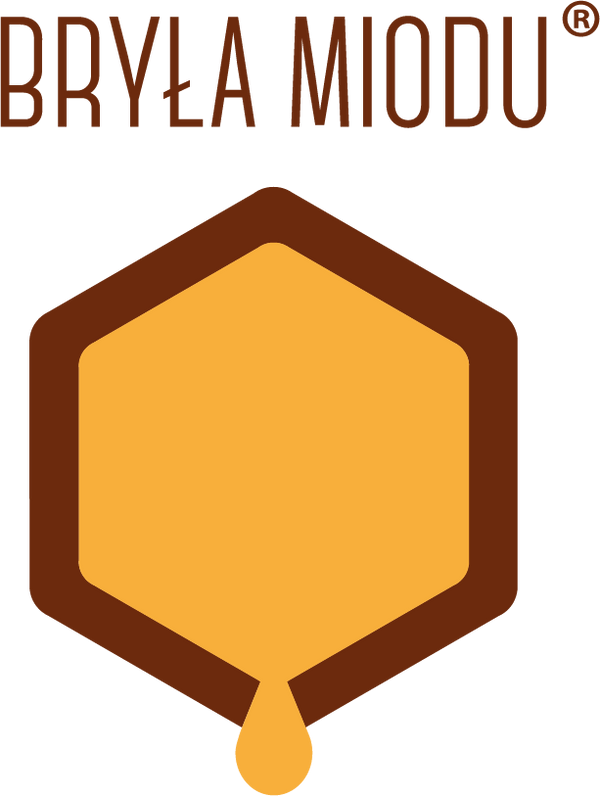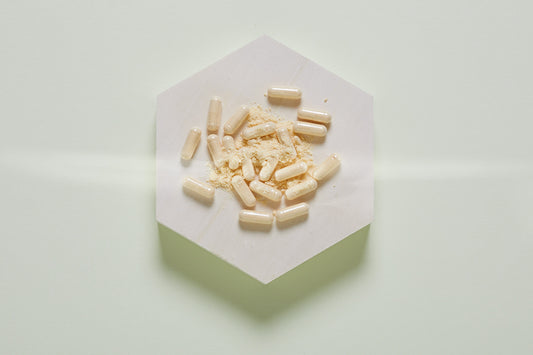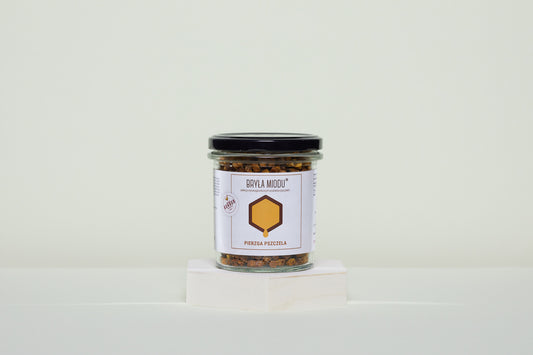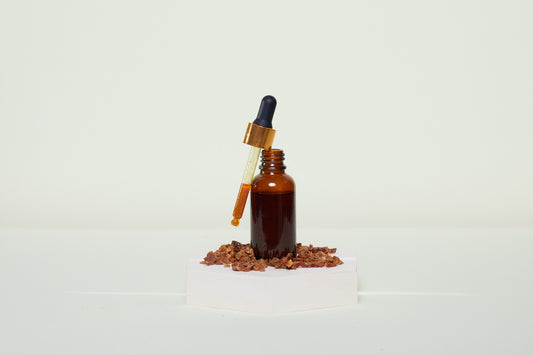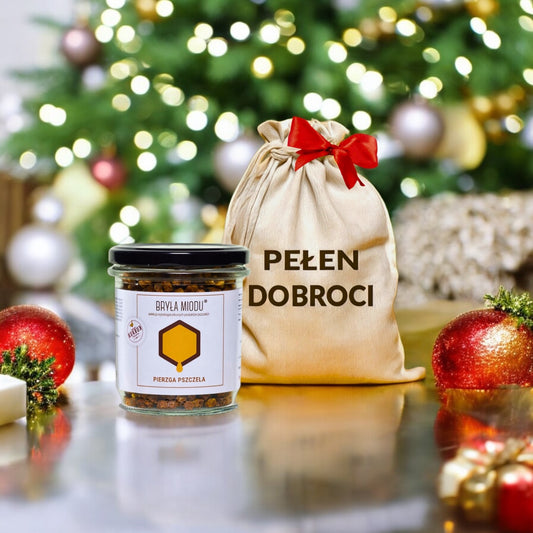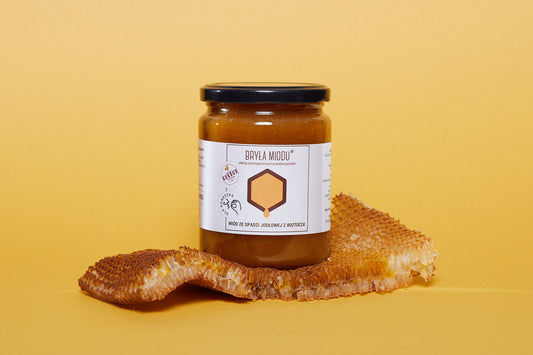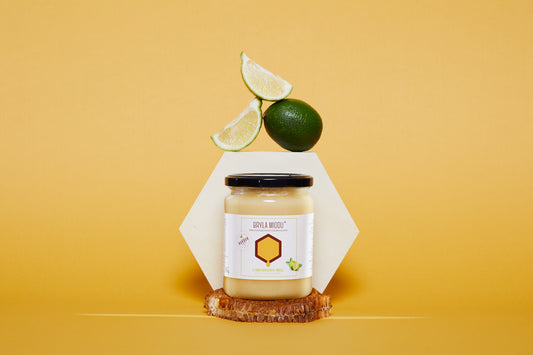Apitherapy is a term derived from the Greek word "apis", which means "bee". It includes the use of bee products to improve health and treat various ailments. This ancient practice has its roots in various cultures such as Chinese, Egyptian and Greek, where bee products were valued for their medicinal properties.
History of apitherapy
The earliest records about apitherapy come from a Chinese medical treatise Shennong's Classic of Materia Medica from the 3rd century BC, which mentions the properties of honey and other bee products. In Egyptian hieroglyphs we also find references to the use of honey and propolis in medicine. There is a document containing dressing instructions that involve applying honey directly to the injured part of the body and wrapping it with a cloth. Honey was applied to open wounds, cuts, burns or ulcers to dry them out and heal them effectively as the honey created a barrier to prevent further infection.
In ancient Greece, Hippocrates, the father of medicine, used honey extraction in his practice, considering honey to be an effective antipyretic and antibacterial agent. This is one of the first confirmed uses of apitherapy in the history of medicine.
Principle of apitherapy
Apitherapy is based on various bee products and their properties. Each of them contains specific chemical ingredients that have healing potential. Honey is rich in natural sugars, enzymes and antioxidants that help soothe sore throats and support the immune system. Flower pollen provides the body with vitamins and minerals and also helps fight allergies. Propolis has antibacterial and anti-inflammatory properties, which is used to treat infections and improve the wound healing process. Bee venom, although toxic in large doses, has analgesic and anti-inflammatory potential and is therefore used to treat joint and muscle pain.
Later in our article, we will discuss individual bee products and their effects on human health.
HONEY
Honey characteristics
Honey is one of the most important products of beekeeping, both from a quantitative and economic point of view. Its history is parallel to the history of humanity. In virtually every culture, you can find evidence of the use of honey as a food source and symbol in religious, magical and therapeutic ceremonies. Honey owes this recognition primarily to its unique status as one of the first concentrated sources of sugar. Cultural diversity has contributed to the richness of honey's uses in various products.
" Honey is a natural sweet substance created thanks to the work of bees, which collect nectar from flowers, plant juices or secretions of insects sucking the juices of living parts of plants. They then process these raw materials, combining them with their own substances, and finally leave them to ripen in combs " - is the general definition of honey, according to the guidelines Codex Alimentarius (1989) , which define all the necessary characteristics of this product in the context of trade.
Honey composition
Honey ingredients can be divided into several main groups:
- Sugars - constitute from 95 to 99% of the dry weight of honey. They consist mainly of simple sugars such as fructose and glucose, which constitute 85-95% of all sugars. Fructose is usually present in larger amounts than glucose. In addition to these two main sugars, honey also contains small amounts of disaccharides (sucrose, maltose and isomaltose), trisaccharides and oligosaccharides.
- Water - the second largest component of honey. Its presence is important because it affects the storage of honey. Only honey with a water content below 18% can be stored with a low risk of fermentation.
- Organic acids - honey contains organic acids, the most important of which is gluconic acid. It is responsible for the acidity of honey and influences its characteristic taste.
- Minerals - are present in honey in small amounts, potassium is the most abundant. Dark honeys, especially honeydew honey, contain more minerals. Other trace ingredients include nitrogenous compounds, including enzymes derived from the secretions of the salivary glands of worker bees. These substances are not important in terms of nutritional value, but serve as indicators of honey freshness.
- Enzymes - honey contains, among others, invertase (sucrase), diastase (amylase) and glucose oxidase. These enzymes play an important role in the honey production process.
Honey also contains other ingredients, such as proteins, amino acids, water-soluble vitamins, as well as aromatic and pharmacologically active compounds. They are responsible for the color, taste and potential health properties of honey. Most of them are still unknown and require further research. It is also worth noting that the composition of honey may vary depending on, among others: on production conditions and geographical origin.
Honey ingredients
|
Ingredients |
On average % |
|
Water |
17.2 |
|
Fructose |
38.2 |
|
Glucose |
31.3 |
|
Saccharose |
1.3 |
|
Maltose (reducing disaccharides) |
7.3 |
|
Higher sugars |
1.5 |
|
Free acids (gluconic acid) |
0.43 |
|
Lactone (gluconolactone) |
0.14 |
|
Total acid (gluconic acid) |
0.57 |
|
Ash |
0.169 |
|
Nitrogen |
0.041 |
Source: Cipollone F, Fazia ML, Mezzetti A. Oxidative stress, inflammation and athero-sclerotic plaque development. Int Congr Ser. 2007;1303:35–40
Nutrients in honey
|
Ingredients |
IU |
Amount in 100 g of honey |
|
Energy value |
K.Cal |
304 |
|
VITAMINS: |
||
|
AND |
IU |
– |
|
B1 (Thiamine) |
mg. |
0.004 – 0.006 |
|
B2 (Riboflavin) |
mg. |
0.002 – 0.06 |
|
Nicotinic acid (niacin) |
mg. |
0.11 – 0.36 |
|
B6 (Pyridoxine) |
mg. |
0.008 – 0.32 |
|
Pantothenic acid |
mg. |
0.02 – 0.11 |
|
Bc (Folic acid) |
mg. |
– |
|
B12 (Cyanocobalamin) |
mg. |
– |
|
C (Ascorbic acid) |
mg. |
2.2 – 2.4 |
|
D |
mg. |
– |
|
E (Tocopherol) |
IU |
– |
|
H (Biotin) |
IU |
– |
|
MINERALS: |
mg. |
|
|
Calcium |
mg. |
4–30 |
|
Chlorine |
mg. |
2–20 |
|
Copper |
mg. |
0.01 – 0.1 |
|
Iodine |
mg. |
– |
|
Iron |
mg. |
1–3.4 |
|
Magnesium |
mg. |
0.7 – 13 |
|
Phosphorus |
mg. |
2–60 |
|
Potassium |
mg. |
10 – 470 |
|
Sodium |
mg. |
0.6 – 40 |
|
Zinc |
mg. |
0.2 – 0.5 |
Source: Crane, E. (1990) Bees and Beekeeping: Science, Practice and World Resources. Cornell University Press, 240.
All cultures in the world treated honey as a substance with medicinal properties. This opinion has survived to our times. Although many of these beliefs have not yet been clearly confirmed by science, it is difficult to deny the beneficial effects of honey on health. Below we present the main attributes and areas of the body in which it is believed to have a positive influence:
- Digestive system - honey can support the process of food absorption and have beneficial properties in the case of difficult intestinal problems, such as constipation, duodenal ulcers and liver dysfunction.
- Respiratory system - this bee product it is known as a remedy for upper respiratory tract infections, as well as for irritation and inflammation of the mouth, throat and bronchi. Its benefits, apart from its antibacterial effect, may result from the soothing and relaxing properties of fructose.
- Skin and wound healing - honey is used both in moisturizing cosmetics and pharmaceutical preparations applied directly to the skin to treat wounds, ulcers, sores, bedsores and burns. It has the ability to protect against infections, promotes the process of tissue regeneration and helps reduce scars, especially when used in unprocessed form. Immediate application prevents the formation of blisters due to burns and accelerates the healing of new tissue.
- Sight problems - In some regions of Europe, Asia and Central America, based on tradition and clinical experience, honey applications are used to treat cataracts, conjunctivitis and various corneal ailments.
Paramedical benefits
It is often believed that honey made from the nectar of medicinal plants has the same or similar effect as the whole plant or some of its parts. Even if the active ingredients are not transferred directly, mechanisms similar to potentization in homeopathy are possible. Empirically effective therapies such as Bach flower therapy and aromatherapy suggest that honey may have much more medicinal value than its chemical analysis indicates.
It is worth emphasizing that despite the long-term use of honey in informal medicine, further scientific research is necessary to understand the mechanisms of its action.
PROPOLIS
Characteristics and properties
Propolis, also called bee glue, is a resinous substance produced by honey bees. Insects collect resin from tree buds, plant parts and other sources in the environment surrounding the hive. They combine it with their own secretions and pollen, creating a uniform, sticky substance. Propolis is a complex chemical product, its composition may vary depending on the type of plants and the region where it is collected by bees. It contains many substances, including resins, waxes, essential oils, proteins, amino acids, vitamins, minerals and antioxidants.
Propolis is usually dark brown in color, although various shades such as green, red, black or white can be found. It is a viscous and sparingly soluble substance with a characteristic odor. Bee putty performs several important functions in the hive. It is used to seal and glue hive elements and protect it against cold and intruders getting inside. Thanks to its antibacterial properties, it also protects the bee family against diseases.
Propolis is used to treat infections, wounds, inflammation and to strengthen the immune system. It is also widely used in cosmetics.
Ingredients
The composition of propolis depends on the type of plants available to bees. It varies in color, smell and medicinal properties, depending on its origin and season. Propolis from our latitude consists of about 50 ingredients. We have included the most important ones in the table below.
Main ingredients of propolis
|
Component |
Percentage |
|
plant resins and balms |
50% |
|
wax |
thirty% |
|
essential oils |
10% |
|
flower pollen |
5% |
Propolis also contains lipophilic acaricides, natural pesticides that protect against mite invasion. As a result of the analysis of propolis carried out in China, its composition also included sinapic acid, isoferulic acid, caffeic acid and chrysin, which have antibacterial properties.
Medicinal effect
The most important medicinal uses of propolis include:
- cardiovascular and circulatory system - anemia,
- respiratory system - various types of infections,
- dermatology and surgery - tissue regeneration, ulcers, eczema, wound healing - especially burn wounds, mycosis, infections and changes in the mucous membrane,
- immune system - improving its functioning,
- digestive tract - ulcers and infections,
- liver - protection and support of its operation
and many others.
BEE'S MILK
Characteristic
Royal jelly is a substance produced by the pharyngeal glands of bees working as caregivers feeding both young larvae and the adult queen bee. The queen and larvae receive the milk immediately after it is secreted; it is not stored or collected in any way. The only method of obtaining royal jelly is by breeding queen bees. Due to the spectacular fertility and longevity of queen bees fed exclusively with milk, its potential benefits for humans began to be considered. This is why the consumption of royal jelly is constantly increasing, although so far the health benefits of its consumption have not been fully scientifically proven.
Composition of royal jelly
In recent years, numerous chemical analyzes of royal jelly have been published. Only recently, thanks to very advanced technologies, detailed analyzes of the extraordinary composition and complexity of this substance have been obtained. The basic ingredients of the milk are presented in the table below.
Composition of royal jelly
|
Ingredients |
minimum |
maximum |
|
Water |
57% |
70% |
|
Proteins (N x 6.25) |
17% dry matter |
45% dry matter |
|
Sugars |
18% dry matter |
52% dry matter |
|
Lipids |
3.5% dry matter |
19% dry matter |
|
Minerals |
2% dry matter |
3% dry matter |
Source: G. Lercker et al.: Apidologie, 34 2 (2003) 129-137.
Impact on the human body
Royal jelly was initially advertised for its rejuvenating effects. As it turns out, the scope of this substance's impact on the human body is much wider. The effects of taking royal jelly are presented in the table below.
List of some of the effects of royal jelly on humans.
|
Premature babies and newborns with nutritional deficiencies of various origins |
8-100 mg orally, improvement of general condition, increase in weight, appetite, red blood cells and hemoglobin |
|
Elderly patients (70-75 years) suffering from anorexia, depression and low blood pressure |
20 mg injected every other day, overall improvement, 20 mg taken orally every other day, improvement as above |
|
Psychiatry |
Improvement in case of weakness, nervous breakdown, emotional problems and counteracting the side effects of psychoactive drugs |
|
Metabolism |
A mixture of royal jelly, honey and ginseng, weight gain and improvement of mental condition, change in blood characteristics |
|
Metabolism stimulation |
A stimulating effect comparable to that caused by proteins is believed to be due to the activity of enzyme complexes |
|
Wound treatment |
5-30 mg/ml injected into burn blisters, improving skin regrowth |
BEE POLLEN
Characteristics
Bee pollen, also called "flower pollen," is microscopic plant grains that bees collect and carry in the form of balls to the hive. It is intensely colored, from yellow, red, brown to green. Its grains have a diameter of 10 to 100 micrometers.
Bee pollen is a valuable beekeeping product due to its nutritional value and health properties. Beekeepers often collect it from the hive and offer it as a dietary supplement or natural medicine. It is a product rich in protein, vitamins (such as vitamin C, vitamin E, vitamin A) and minerals (e.g. iron, zinc). Therefore, it is a valuable component of the diet of humans and animals. Bee pollen also plays a key role in maintaining balance in ecosystems by supporting the process of plant pollination.
Composition of bee pollen
Bee pollen is a treasure trove of nutrients. You can read them in the two tables below.
Average composition of bee pollen
|
Ingredients |
min. % |
max. % |
|
Water (air-dried pollen) |
7 |
11 |
|
Raw protein |
20 |
21 |
|
Ash |
3 |
3 |
|
Ether extracts (crude fat) |
5 |
5 |
|
Reducing sugars |
36 |
26 |
|
Non-reducing sugars |
1 |
3 |
|
Starch |
– |
3 |
|
Undefined |
28 |
29 |
Other important components of pollen collected by bees
|
Flavonoids |
At least 8 (the flavonoid is characteristic of each type of pollen) |
|
Carotenoids |
At least 11 |
|
Vitamins |
Complex of vitamins C, E, B (including niacin, biotin, pantothenic acid, riboflavin (B 2 ), and pyridoxine (B 6 )). |
|
Minerals |
Basic minerals: K, Na, Ca, Mg, P, S. Trace elements and vitamins: A1, B, C1, Cu, I, Fe, Mn, Ni, Si, Ti and Zn |
|
Terpenes |
|
|
Free amino acids |
All |
|
Nucleic acids and nucleosides |
DNA, RNA and others |
|
Enzymes |
Over 100 |
|
Growth regulators |
Auxins, brassinosteroids, gibberellins, kinins and growth inhibitors |
Source: Crane, E. (1990) Bees and Beekeeping: Science, Practice and World Resources. Cornell University Press, 640.
Healing and health-promoting effects
Bee pollen has documented healing properties supported by the results of many scientific studies conducted around the world. Here are the most important ones:
- Pollen components such as proteins, healthy fats, vitamins, minerals, nucleic acids, lecithin and cysteine help strengthen body's immunity .
- Bee pollen contains antioxidants that fight free radicals caused by radiation and chemical toxins.
- Pollen is particularly effective in neutralizing the effects of stressors physical and emotional.
- It increases energy levels , which makes it a popular remedy among athletes.
Thanks to its rich nutritional composition, bee pollen provides valuable health support and helps maintain the body's balance, especially in the face of daily exposure to harmful environmental factors.
BEE'S VENOM
Characteristics of bee venom
Among the various species of insects, only some have the ability to defend themselves with a sting by injecting poisonous venom at the moment of sting. These include ants, wasps and bees.
Bee venom is a clear and odorless liquid with a watery consistency. When in contact with mucous membranes or eyes, it causes an intense burning sensation and irritation. Once dry, the venom turns a light yellow color. It contains many volatile substances that lose their properties during the collection process.
Ingredients
The venom ingredients are presented in the form of a table containing their percentage in the dry product.
Composition of worker bee venom
|
A class of molecules |
Component |
% |
|
Enzymes |
Phospholipase A2 |
10-12 |
|
Hyaluronidase |
1-3 |
|
|
Acid phosphomonoesterase |
||
|
Lysophospholipase |
||
|
α-glucosidase |
||
|
Other proteins and peptides |
Melittine |
50 |
|
Apamin |
1-3 |
|
|
Cell degranulating peptide |
1-2 |
|
|
fattening (MCD) |
0.5-2.0 |
|
|
Szkapin |
1-2 |
|
|
Prokamine |
||
|
Adolapine |
0.1 |
|
|
Protease inhibitor |
13-15 |
|
|
Tertiapine |
||
|
Minor peptides (with less than 5 amino acids) |
||
|
Physiologically active amines |
Histamine |
0.5-2.0 |
|
Dopamine |
0.2-1.0 |
|
|
Norepinephrine |
0.1-0.5 |
|
|
Amino acids |
Aminobutyric acid |
0.5 |
|
α-amino acids |
1 |
|
|
Sugars |
Glucose & fructose |
2 |
|
Phospholipids |
5 |
|
|
Volatile compounds |
4-8 |
Therapeutic effect of bee venom
The toxin secreted by bees, known as apitoxin, is a substance with unusual properties. Although it is toxic in large amounts, under controlled conditions it can have many potential health benefits:
- Analgesic effect . Bee venom contains chemicals such as melittin that have the ability to relieve pain. It is used in the treatment of chronic pain, including joint and muscle pain.
- Anti-inflammatory properties . Apamine and melittin can reduce inflammation in the body by inhibiting the action of factors that cause it. Therefore, bee venom is effective in the treatment of, among others: arthritis or skin inflammation.
- Supporting the immune system . Bee venom can stimulate the immune system to produce antibodies and activate immune cells. This helps fight infections and strengthen the body's defenses against disease.
- Potential in the treatment of neurological diseases . Research suggests that bee venom has the potential to treat neurological diseases such as multiple sclerosis. The components of the venom affect the functioning of the nervous system, which creates the possibility of using apitherapy in neurology.
Apitherapy as a natural support for traditional medicine
In recent years, more and more scientific research has confirmed the healing properties of bee products, which opens up fascinating perspectives in the field of apitherapy. Honey, propolis, pollen, royal jelly and bee venom are just some of the natural substances that have been used in folk and traditional medicine for centuries. Thanks to progress in the field of medical science and pharmacology, we are gaining a better understanding of the mechanisms of action of these products, which allows them to be used more effectively in the treatment of various diseases.
The future of apitherapy seems to be extremely promising. As our knowledge of bee products deepens, we will be able to develop more and more advanced therapies that take advantage of these natural treasures. However, before attempting any form of apitherapy, it is always a good idea to consult a professional doctor or therapist to ensure a safe and effective treatment approach.
It is also worth remembering the need to protect bees, which are key to the production of these valuable products. Without their work, apitherapy will no longer be possible.
As our knowledge grows, we can expect apitherapy to become even more integrated with conventional medicine, opening up new possibilities in the field of treatment and health support.
